Stories are captivating and they’re the best way to convey … well anything really. Through this blogpost, we’ll see that the current formats of delivering talks, medical talks especially, are at best a tad outdated and at worst borderline ineffective, and I hope that together we will all improve at this.
Humans are narrative beings – we make sense of the world through stories. The link between anyone and anyone else – anything that I know, anything that I want to impart – must be communicated with stories. So, the best way to become a good teacher, a good clinician, a good partner, a good whatever – is to get good at telling, and listening to stories.
Like most things, there is an element of talent amongst good speakers, but like anything, this is a skill that can be learned and needs to be practiced. Though the principles are at times specific, as we’ll focus on medical talks, they can always be generalized.
By the end of this post:
- I promise you will be aware of these principles, and
- I promise that you WILL be a better story teller.
You’ll give better talks, give unrefusable consults, win arguments with your partners, and in general you’ll just be more interesting to be around.
..There’s a Problem with Medical Talks
Now, here’s the issue… Why do we SUCK? (yeah… I went there)
Why is it so easy to watch hours of YouTube or binge an entire TV show but so painful to sit through two hours of lecture?
“Anyone who tries to make a distinction between education and entertainment doesn’t know the first thing about either” – Marshall McLuhan
Presentations are fundamental to medical education. Think back to the last lecture you attended… To be fair, some are really good, some apply the principles we’ll discuss, but many definitely do NOT. Generally, high volumes of info are delivered, and the uncomfortable truth is that very little is actually retained.
“An overload of facts does NOT equal an abundance of learning” – Ross Fisher
In general, teaching styles have stagnated despite much more nuanced understandings of learning. There is a lack of thought in planning the story and delivery of a talk, and a misguided focus on what goes into the slides.
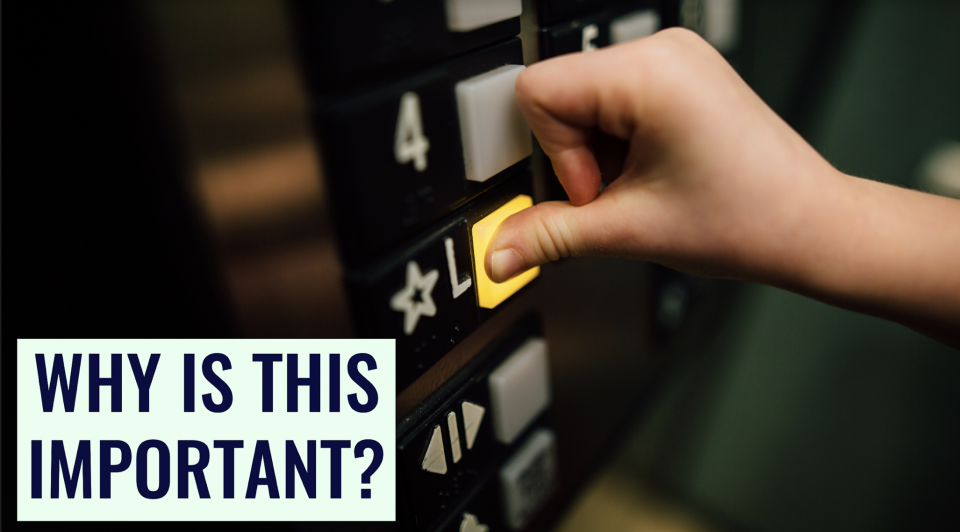
Why is this important?
The lecture format is ubiquitous and not going anywhere, so if we are going to do it, we might as well do it well. Luckily, learning how to tell a story – will help you not only when formally presenting, but in every single aspect of life.
Life is a string of “elevator pitches” – Consults, case presentations, recaps during a resuscitation, etc. What people perceive about your knowledge, your capabilities, and ultimately your advancement – all hinge on your ability to support that through a convincing narrative.
You want to receive due credit and recognition for your knowledge and contributions
You want your ideas and the work you’ve done to be remembered and applauded
So, you need to get your ideas across and get them across effectively
Overview
Now that we’ve seen the light and know there’s important improvements to be had, we’re on to the meat of it, here’s an overview of the post and the backbone of how to create effective and successful talks.
A talk is made up of three parts:
- The story
- The supportive media
- The performance
These are in chronological order to how you should prepare them (representing the beginning, middle, and end of your preparation process). The most important by far is the STORY, followed by the performance/delivery, followed way behind by the supportive media – but I can guarantee, myself included, that most of us have that completely reversed in terms of time spent on what.
Story ALWAYS trumps style. You can have a great talk without any slides. But you cannot have a great talk with excellent slides and no content.
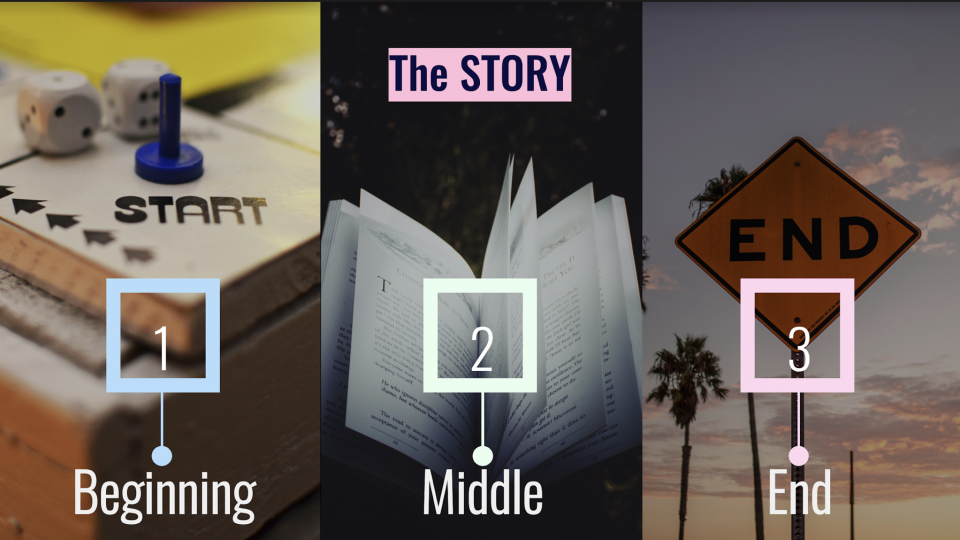
So, lets begin with the most important part – THE STORY.
Any story, has a beginning, middle, and end. Easy to say, but even easier to forget when putting together your talk – every argument needs to be introduced, supported, and concluded. This needs to be planned out and presented in a logical manner.
When you go to a talk, and you find it difficult to follow – this is the part that is lacking. So it’s incredibly important to spend some time getting it right.
The Beginning
So you want to start your talk and you want to do it with a bang… how do you do it? In just a few minutes your audience decides whether they’re going to listen to you or fiddle on their phones. How do you capture their attention?
This is gonna hurt, but DO NOT start with: “Oh hi, for those who don’t know me my name is blank and today we’re going to talk about xyz…”
Sure, this is an easy starting point, but unfortunately, you haven’t added anything that your audience doesn’t already know from reading your title slide, or the conference schedule, or they already know you.
Everyone’s going to have their own comfort level but give these three methods a TRY:

- A problem: a question that matters to the audience
- This is why case studies with ambiguous answers are so effective
- Oh I’ve seen that, I just saw that last week, I’m actually not sure what to do, let me listen…
- A factoid that shocks
- Did you know that the number of people living today outnumber those that have ever lived before?
- Whoa… mind-blowing… doesn’t even matter that its nowhere near true – its one of those urban myths, but it makes everyone think, it gets people interested. You can explain the myth and go on to relate it to the huge epidemiological impact whatever disease you’re talking about has

- I recommend: an impactful story
- Very meta, stories within stories – but people relate to people – the reason we have difficulty listening to medical talks but not TV Shows or YouTube is that medical talks focus on the disease entity
- But stories are about people (not about objects, not about things), they’re about the people behind the things
- If you want to tell a good story about the ED, if you want people to engage, you don’t talk about the ED, you talk about the people that make up the ED (what they do, how they are, what’s important to them, what’s directly important to your audience
The beginning also delivers what’s called an EMPOWERMENT PROMISE – what do I, the speaker, PROMISE to provide YOU, the audience, by the end of this talk – i.e. why is this worth your time.
It takes a bit of forethought – but any one of these methods will make your intro that much more engaging. So next time you prepare for a talk – ask yourself, what in the first 5 mins is going to convince my audience they should keep listening.

The Middle
Now that we’ve covered the Introduction and you’ve hooked your audience with a promise you’ll make their lives better, onto the MEAT of the talk. The Middle.
The middle of the Story is made up of 3 key components:
- The message
- The narrative
- Authenticity
The Message
The first and most important step in any medical talk is to identify your message. WHY you are presenting is much more important than what you are presenting.
Ask yourself these questions to focus your talk and make sure that everything in your talk points back to this…
- What is your point?
- Why does it matter?
In medical terms you want to identify a single memorable message (or 2-4 take home points) that are important and impactful to your audience.
You MUST know your audience and focus on your audience
A useful brainstorming question here is: “What keeps my audience up at night?” (this is why PE is such a popular topic)
“A presentation is about what the audience needs, NOT what the presenter wants” – Chad Hodge
“We should help people to see themselves as the hero of the story, whether the plot involves beating the bad guys or achieving some great business objective. Everyone wants to be a star, or at least feel the presentation is addressing them personally” – Chad Hodge
The Narrative
Once you’ve decided on your MAIN message, it’s time to craft the narrative around that message. Create a narrative that YOU YOURSELF ARE PASSIONATE about. If you find YOUR passion, your story within the topic…Communicate that, and the passion will flow through
Dr. Anand Swaminathan of FOAMed fame once said in a podcast that he would go to ANY medical talks given by Dr. Amal Mattu – applications of prostate-specific antigen in the ED, he’s there; 101 uses of the Foley balloon, sign me up – because Dr. Mattu has a way of making any topic interesting, and that’s by finding his passion within each of those topics and telling that story.
We won’t go step-by-step into how to do this because it will differ depending on the topic – only you yourself will know that topic through-and-through and have a good sense of what arguments and information should be presented when.
But just keep in mind that the narrative surrounding the information you’re presenting needs to fit into an easily digestible framework and that that doesn’t just happen, it needs to be thought about and planned.
The basic premise is that it’s your job to walk your audience from “not knowing” to “accepting and acting on your point of view”
Be Authentic
Lastly, once you’ve focused your message and formed your storyboard: Be authentic and make your audience feel.
If you can tell stories and the audience can connect with those stories, then they want to hear what you have to say. All the reasons and benefits of what you’re touting are already written in your slides and PowerPoint. But they need to trust you and care about you as a person to engage with you and decide that they’ll act.
“storytellers—film makers, novelists, etc.—know that it is emotion which impacts people most profoundly. Yes, facts, events, [and] structure are important, but what people remember—and what is more likely to push them to act—is the way the narrative made them feel” – Tim Montrief
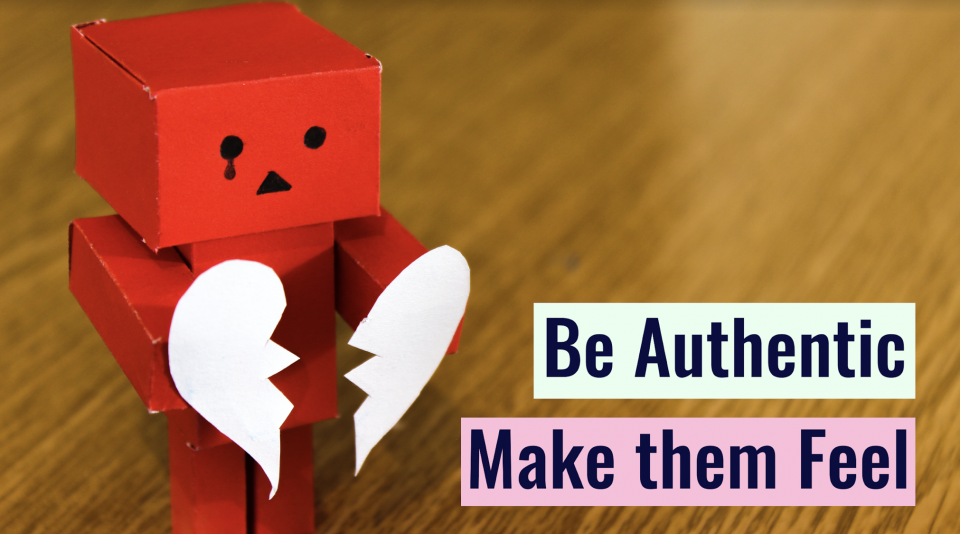
What does authenticity mean in medical talks?
Think about any medical talks given by Dr. Sara Gray (ED/ICU at St. Michael’s Hospital, Toronto). Authenticity in medicine is about vulnerability and how you can use the reality of what we do to foster support, confidence, a will to learn and a will to act – especially when talking about mistakes.
We all miss things, we all make mistakes – this is why we’re so drawn to M&M’s
By being authentic in our case examples, drawing from our own experiences and being vulnerable – we tell stories that connect ourselves AND our audience to the abstract idea that is the disease entity. That transforms a medical talk into one about people, about me and about you – and, again, its the human stories that people remember.
The End
Now all that’s left is to finish strong! We finish with both the FINAL SLIDE and your FINAL WORDS
Final Slide
Again, this may ruffle some feathers… and I’ve done this too, but you don’t want your LAST slide to be “QUESTIONS?” – this adds nothing, it can easily be said, and no one really needs to be reminded that there’s a standard question/answer period after your talk.
You want your audience’s last thoughts of the presentation to be about your CONCLUSIONS and the IMPACT your talk will have on their lives. A good summary slide focusing on the IMPACT of your talk will do this.
Further to this, consider delivering your concluding thoughts and slide AFTER the question period – this is something that Dr. Amal Mattu does. Why?
- One, so that the last thoughts in your audience’s minds are yours, and
- Two, so that the talk doesn’t just peter out… “any more questions… no… well thanks everyone…”
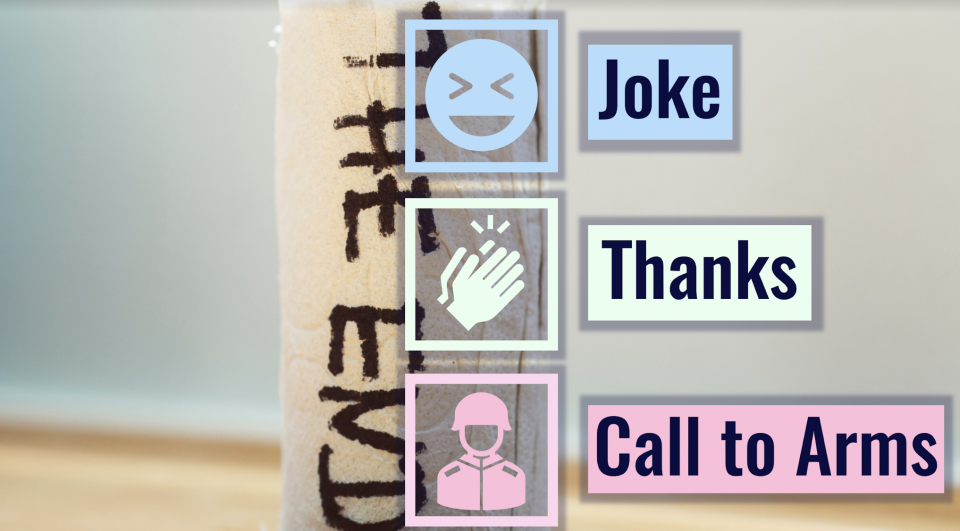
So you have your ideas nicely summarized on your final slide… On to the FINAL WORDS – after you’ve summarized, how do you actually end?
There are three ways to go about this, which you can try for yourself and see what suits you:
- Joke: these are great, because if it lands, people think they’ve had fun the whole time no matter how bad your talk was
- Thank you: now this is the most common way to end off… and I don’t recommend it in isolation. Hear me out. It doesn’t really add anything and it sort of implies the audience has stayed purely out of politeness… but it does express gratitude, which is great… so don’t JUST end with a thank you… SALUTE the audience – hard to explain, but here’s an example; “its been great fun being here, fascinating seeing what you folks are doing at BLANK, I’ve been stimulated and provoked by the kinds of questions you been asking, its been really great and I look forward to coming back”
- Call to Arms: This is a trick of Dr. Amal Mattu’s and it works really well for medical talks. After you’ve spent the lecture learning about flipped T waves in aVL, a great way to end a talk is a call to action – “now it’s YOUR responsibility to never miss that subtle sign and to spread the word”

The Supportive Media
Now that we’ve nailed down and honed the STORY, which is the most important part of any talk we can:
Create your supportive media. Just like before, what is your key message, and how can the slides help support what you’re saying (not replace what you’re saying)
Here are three quick tips:
- HIGH RESOLUTION images
- This makes your talk look infinitely more professional – there’s nothing like crappy pixelated images to break the immersion
- What’s even worse… is WATERMARKS … like you stole it, didn’t pay for it, and we know
- There are soooo many free sources for pictures that there’s NO excuse (Flickr, pixabay, pexels, unsplash, freepik, pikwizard to name just a few)
- With this, please keep in mind that reading from PowerPoint slides does NOT equal teaching
- HQ images, not lines of text
- Infographics, not lines of text
- Be consistent with your design
- To look professional keep the fonts, color pallet, and layouts similar
- You can easily search for free PowerPoint templates to make this happen
- Data slides
For the sake of time I will only briefly address this – if you say “I know this is a messy slide but…” you’re doing it wrong – make it better.
Nobody wants to see your massive table with a hundred numbers in it, only for you to focus with your little red box (and some people don’t even do this) – if that’s the important part, then that’s all that needs to go on the slide.
Oh, but Richard you say, I just LOVE my P-values or my audience just needs it for reference.
- One, I can guarantee no one is going back to your slides for reference, if they’re going to fact check you, they’re going to the actual paper, and
- Two, if your audience truly needs to see it, then dedicate a whole slide to it; otherwise, just say it
The most important part of the slides is not the content, but the thought process that goes into making them and editing them – in doing this, you decide what’s most important and how to distill complex ideas into simple images
Once the slides are made…
- Cut, cut, cut – anything that doesn’t further your main point
- Aim for 80% of the available time – quality over quantity here

The Performance
And that brings us to the final part: the performance, the delivery. You’ve got to actually practice your talk.
Rehearse…
- Until you’re comfortable giving the talk without your slides
- Try to practice at least once without your slides
Now if you’re really strapped for time, JUST focus on the introduction and conclusion of your talk because these are the most memorable for the audience.
“I fear not the man who has practiced 10,000 kicks once… But I fear the man who has practiced one kick 10,000 times” – Bruce Lee
I think that’s all that needs to be said about this, we all know it needs to be done – but none of us, including myself, want to take the time required to do it. It really is as simple as blocking off dedicated time to practice.
Virtual Presentations
I think it’d be an understatement to say that COVID’s affected us… But as many of our medical talks and meetings in the near future will be virtual.
Here are a few quick hitters and tips you can implement right now to improve your virtual presentations. To signpost them, we’ll talk about: emotion, standing, and audio

Emotion!
- Make “eye contact” – look at the camera!
- Smile, exaggerate emotions
- Put your camera at your eye level – they want to see your eyes not your nostrils
- Think about lighting – you don’t want to be over- or under-exposed
Stand up !– you will naturally give a better performance
Think about Audio!
- You may not realize it, but mediocre video quality, we can deal with, BUT bad audio is exceedingly difficult to stay engaged with
- A quiet space, a decent microphone, filling your room with stuff to reduce echo – all of these will keep you from being THAT person with the horrible audio
Conclusion
The best way to deliver a good talk (and make your life better in general) is to learn to form compelling narratives
- The STORY has:
- The beginning: captivates the audience and provides the empowerment promise
- The middle: delivers the message through a well-crafted narrative and creates emotion
- The end: solidifies conclusions and impacts
- The slides SUPPORT what you’re saying, they do not replace what you’re saying – the less that’s on them, the more the audience will listen to YOU
- The performance, the practice, the entertainment, is super important and needs dedicated time.

References
1. Tim Montrief: https://threadreaderapp.com/thread/1357173678128193538.html
2. Anand Swaminathan on medical talks: https://rebelem.com/rebel-cast-ep-45-how-to-build-a-great-presentation/
3. https://www.keynotable.net/
4. http://ffolliet.com/
5. How to Start a Speech – Conor Neill
https://www.youtube.com/watch?v=w82a1FT5o88&list=FLv_BSHdll-ibrw7M9doGcQQ&index=21
6. How To Speak – Patrick Winston
https://www.youtube.com/watch?v=Unzc731iCUY&list=FLv_BSHdll-ibrw7M9doGcQQ&index=4&t=2925s
7. 6 Public Speaking Tips To Hook Any Audience – Charisma on Command
https://www.youtube.com/watch?v=k8GvTgWtR7o&t=233s

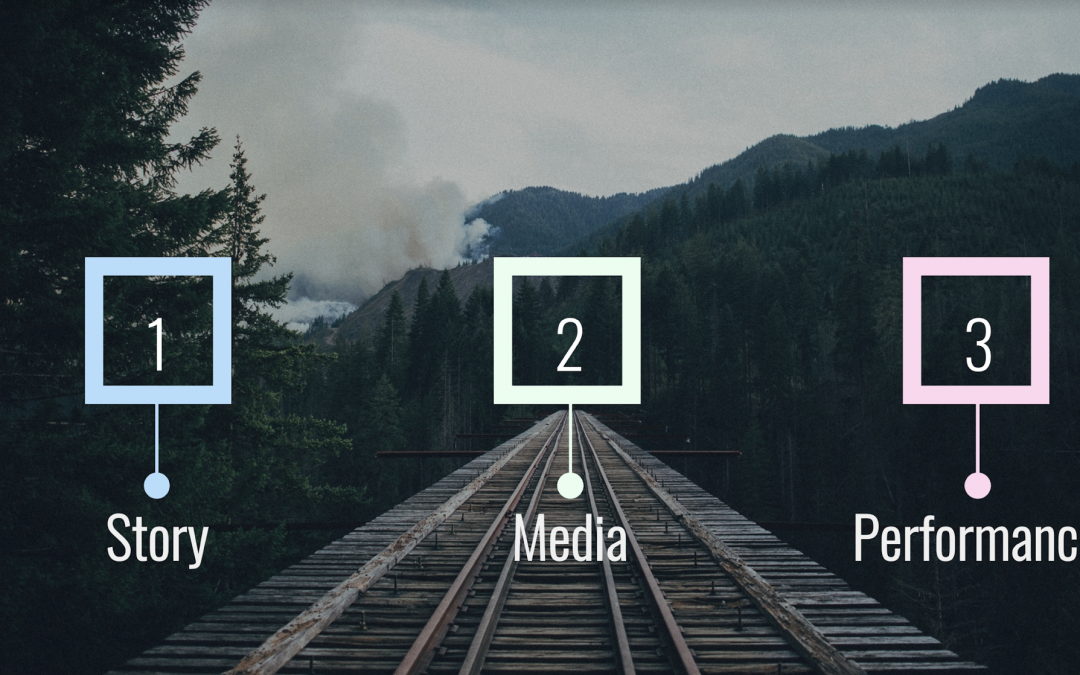
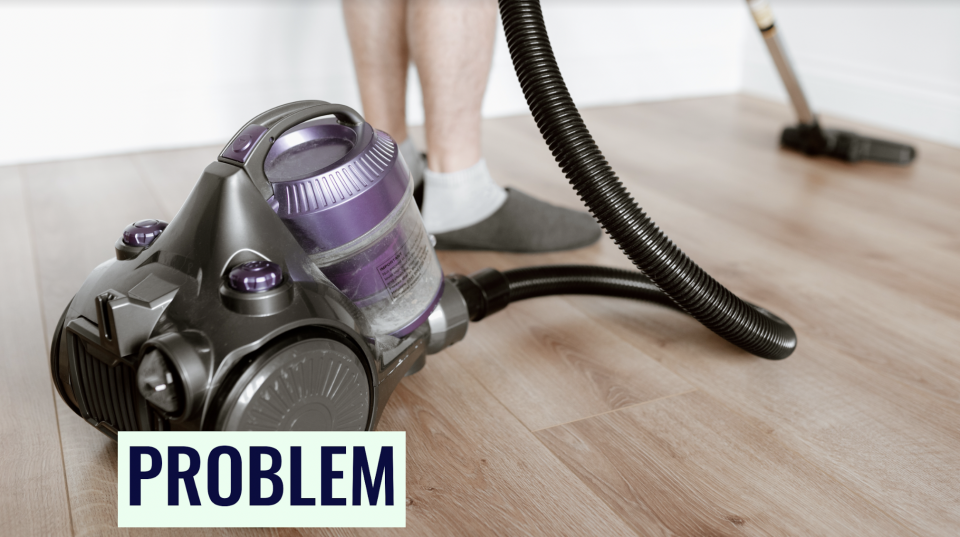


Dr Hoang
Would you consider talking with us on PFC, S&T solutions to gaps in capabilities ?
DRDC